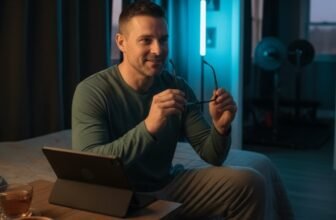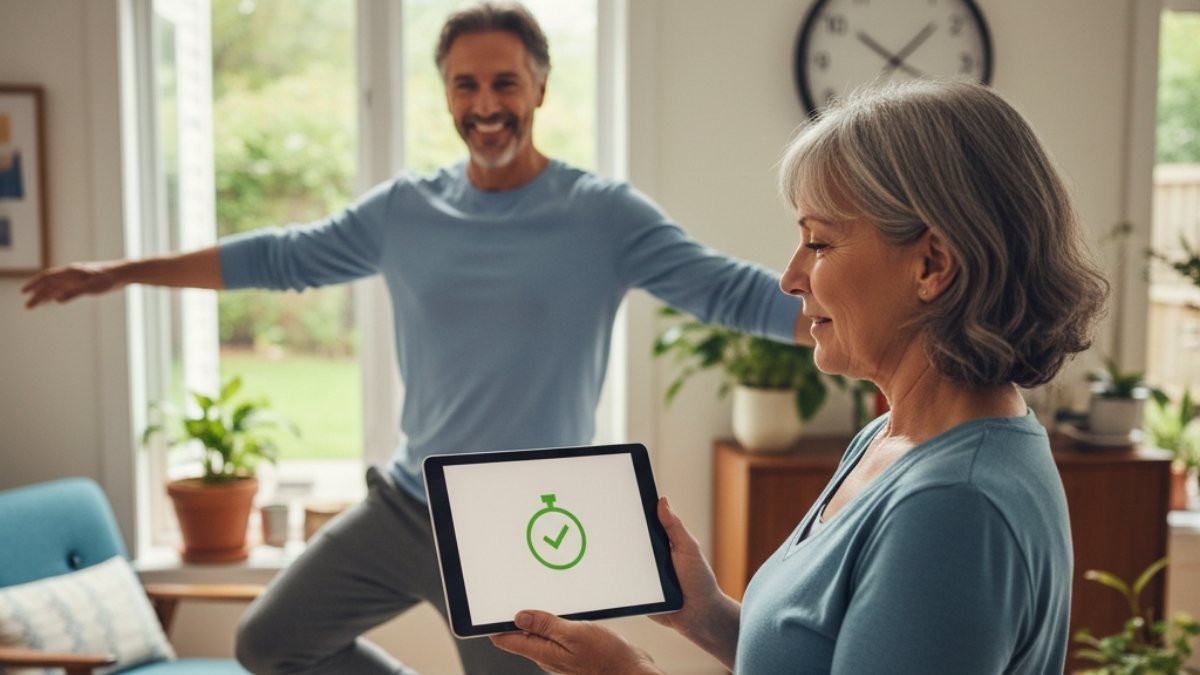
We’ve all experienced it: the sudden, fleeting loss of footing—a slight misstep or standing too quickly. For a second, you feel that tiny, private wobble before your system corrects itself. Most of us just brush it off.
But a persistent, nagging question can arise: Am I becoming more unsteady? This worry often echoes those common mental blanks—the name you can’t quite grasp or the reason you walked into a room dissolving into thin air. We tend to separate these experiences, labeling one a physical issue and the other a mental one.
What if this division is false? What if that simple physical wobble is an early, quiet communication from the core of your cognitive function?
A seemingly straightforward act—the single-leg stance—is, in fact, a remarkably effective window into your brain’s overall health. It’s much more than a parlor trick. It’s an honest check-in, a neurological self-assessment you can perform immediately, wherever you are.
The Unseen Symphony: Why Balance Is a Brain Game, Not a Leg Game
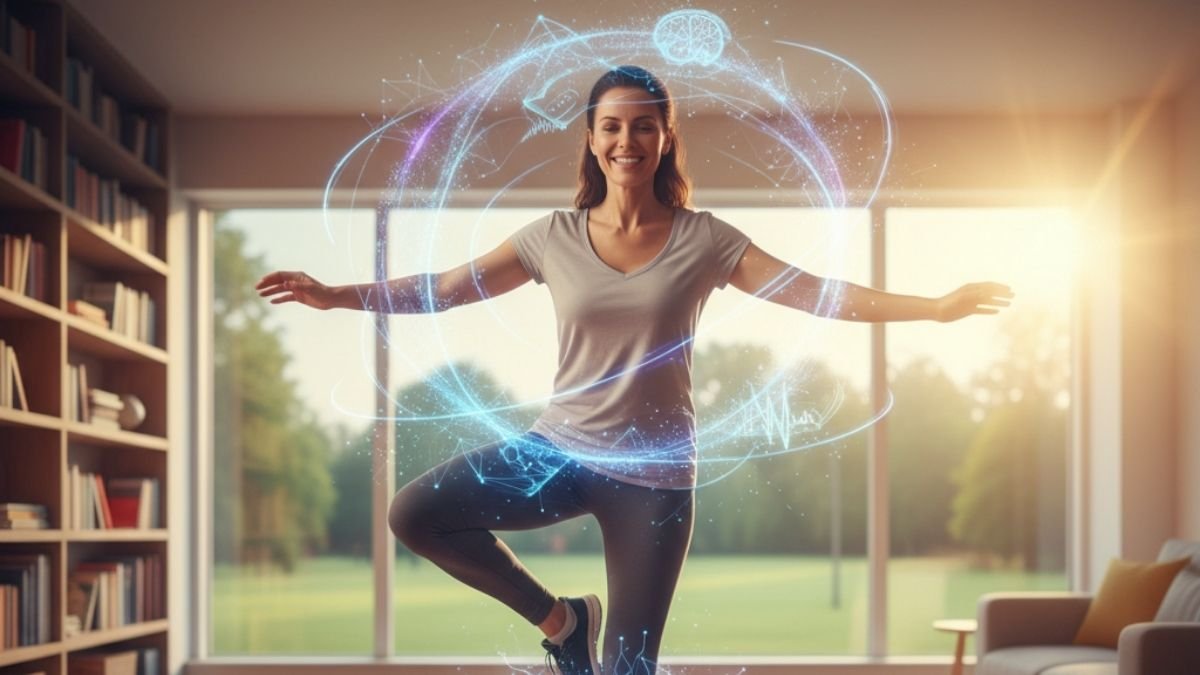
Look, it’s easy to think that staying upright is all about strong legs and ankles. And sure, that helps. But honestly, that’s just the final act of an incredible performance being conducted by your brain every single second you’re not lying down.
Think about it this way: your brain is like a supercomputer running a constant, complex program called “Don’t Fall Over.” To do this, it’s processing a massive amount of data from three different systems, all at once.
- Your Inner Ear (The Vestibular System): Deep inside your ear, there’s a structure that acts like a sophisticated gyroscope. It’s filled with fluid and tiny hair cells that tell your brain every time you tilt, turn, or move up and down. It’s your body’s fundamental sense of gravity and motion.
- Your Body’s Sensors (The Proprioceptive System): You have a network of tiny receptors in your muscles, joints, and ligaments. They’re constantly sending signals to your brain, creating a live “body map” of where every part of you is in space. It’s how you can touch your nose with your eyes closed.
- Your Eyes (The Visual System): This one’s obvious. Your eyes give your brain powerful cues about your position relative to the world around you—the vertical lines of a doorway, the horizontal line of the floor. It’s your brain’s external anchor.
All this information—from your ears, your body, your eyes—floods into the brain’s central processing units. The master coordinator of this whole operation is the cerebellum, a region at the back of your brain that fine-tunes your movements, making them smooth and precise.
But here’s the real kicker, the part that connects everything. The signals from your inner ear don’t just go to the motor-control parts of the brain. They also travel up to higher-order cognitive regions, including the hippocampus. If that word sounds familiar, it should. The hippocampus is the absolute cornerstone of your memory and your ability to navigate the world.
The very same brain structure that helps you remember your grocery list and find your way home is also getting a constant stream of data about your physical balance. They are deeply, neurologically intertwined. This means that keeping you steady isn’t just a background reflex; it’s an active cognitive task. Your brain is dedicating serious resources to it. And when that task becomes harder, it can tell us something important about the brain’s overall health and efficiency.
When Balance Falters: What the Science Is Actually Telling Us

This isn’t just a cool theory. A growing mountain of scientific evidence shows a powerful, and sometimes startling, connection between how well we can balance and what’s happening inside our brains as we age.
When we’re younger, balancing is mostly an automatic process. But as we get older, the brain has to work harder. It starts recruiting more of the prefrontal cortex—the part responsible for focus, planning, and decision-making—just to keep us steady. So, a simple physical test suddenly becomes a cognitive one. A struggle to stay balanced can be an outward sign that the brain’s internal wiring is becoming less efficient.
Here’s what some of the landmark studies have found:
- A Link to Alzheimer’s Progression: In a major study of people already diagnosed with Alzheimer’s, the inability to stand on one leg for just five seconds was a powerful predictor of what was to come. Those with this balance impairment saw their cognitive scores decline more than twice as fast over the next two years compared to those who were steadier on their feet. It suggests balance is a real-time indicator of the disease’s progression.
- A Warning Sign for “Silent” Strokes: This one really gets your attention. A 2014 study published in the journal Stroke looked at nearly 1,400 healthy adults. They found that people who couldn’t balance on one leg for more than 20 seconds were significantly more likely to have evidence of small, “silent” strokes or microbleeds on their brain MRIs. This is damage that you wouldn’t otherwise know is there, but it’s a known risk factor for future, more serious strokes and vascular dementia.
- A Predictor of Overall Cognitive Health: It’s not just about specific diseases. Other studies have shown that older adults who can successfully perform simple balance tasks (like standing heel-to-toe) are 33% to 38% less likely to have impairment in their executive function—things like problem-solving and mental flexibility.
The Balance-Brain Connection: Health Risks
Simple Balance Tests as Profound Windows into Neurological Health
The numbers paint a pretty clear picture. When you combine physical markers (like slow walking speed) with cognitive ones, the predictive power becomes even stronger. Syndromes that track both, like Motoric Cognitive Risk (MCR) and Cognitive Frailty (CF), are strongly linked to a future dementia diagnosis. And maybe most soberingly, a large-scale review found that an inability to pass a simple static balance test was linked to a higher risk of death from any cause.
Let’s just lay it out clearly. This isn’t to scare you; it’s to empower you with information.
Okay, Let’s Try It. Your At-Home Brain Health Check-In

So, how do you have this conversation with your brain? It’s simple. But first, a non-negotiable pact.
Your Safety Is Everything. Seriously.
Before you try any of this, you need to create a safe space. No exceptions.
- Find a Clear, Open Area: Do this away from sharp corners, coffee tables, or anything you could trip on.
- Use a Sturdy Support: Stand right next to a kitchen counter, the back of a heavy, stable chair, or in a doorway. The goal is not to use it, but it needs to be right there to grab if you feel unsteady.
- Go Barefoot: Or wear flat, non-slip shoes. You want your feet to be able to feel the floor. No socks on a slippery floor, please.
- Don’t Do This If You Feel Off: If you’re dizzy, tired, or just not feeling 100%, today is not the day. Try again tomorrow.
- Grab a Friend (If Needed): If you have a history of falls or know you’re unsteady, have someone stand by just in case.
Ready? Let’s do this.
Test 1: The Single-Leg Stance (The Main Event)
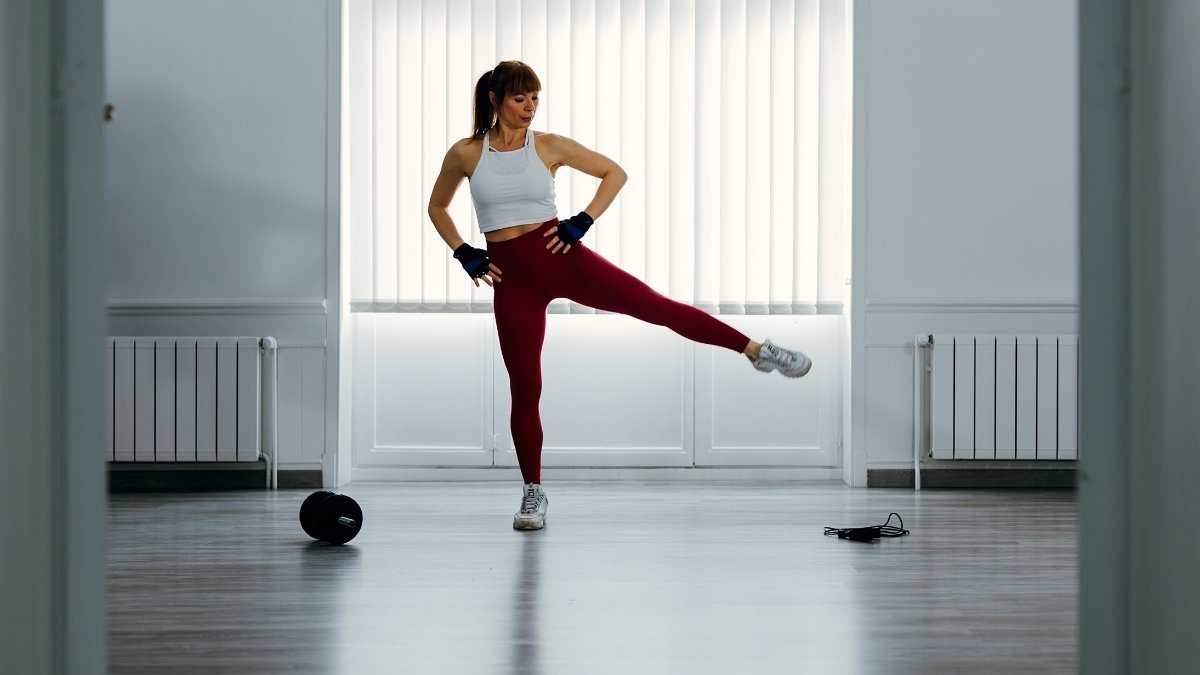
This is the classic test used in so many of those studies. It’s a fantastic measure of how well your three balance systems are working together.
How to do it:
- Stand tall next to your support surface. Cross your arms over your chest or let them hang by your sides.
- Take a breath. When you’re ready, lift one foot about 6 inches off the ground. Try not to let your legs touch.
- Start a timer the moment your foot leaves the floor.
- Stop the timer as soon as your raised foot touches down, your standing foot hops or moves, or you have to grab your support.
- Write down your time. Now, try the other leg.
What to notice:
- The 20-Second Mark: This was the threshold in that Stroke study. Being unable to hold the stance for 20 seconds was linked to a higher chance of having those silent signs of vascular damage in the brain.
- The 10-Second Mark: For older adults, this is a key cutoff. An inability to hold the stance for 10 seconds is associated with a higher risk of falls and all-cause mortality.
- The 5-Second Mark: This is a more urgent red flag, identified as a predictor of more serious, injurious falls.
Test 2: The Sit-to-Stand Test (Your Functional Power Check)
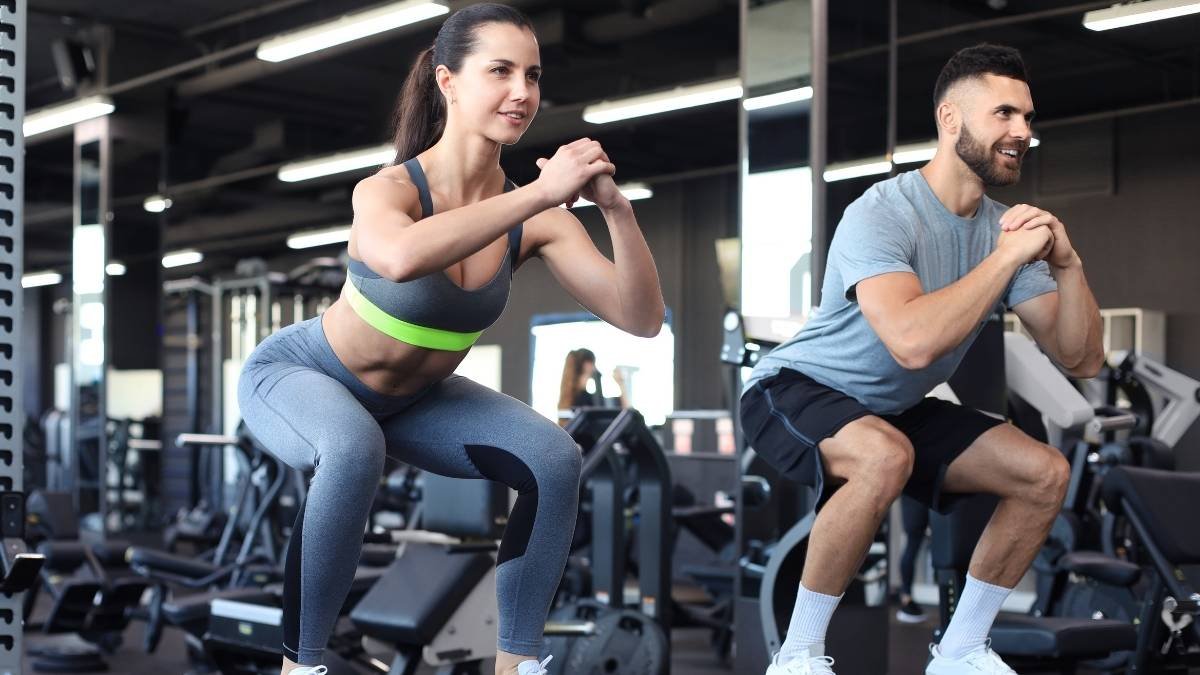
This test isn’t just about balance; it’s about the functional strength in your lower body, which is critical for everyday independence and preventing falls.
How to do it (5-Repetition Version):
- Sit in the middle of a sturdy, armless chair that’s pushed up against a wall so it can’t slide.
- Cross your arms over your chest, feet flat on the floor.
- Time yourself as you stand up completely and sit back down completely, five times in a row, as quickly as you can safely.
- Stop the timer when your bottom touches the chair after the fifth stand.
What to notice:
- A time of 12 seconds or more is often considered a sign of increased fall risk.
- Did you have to use your hands to push off your legs or the chair? That’s a key sign that your lower body strength could use a boost.
Test 3: The 4-Stage Balance Test (A Step-by-Step Challenge)
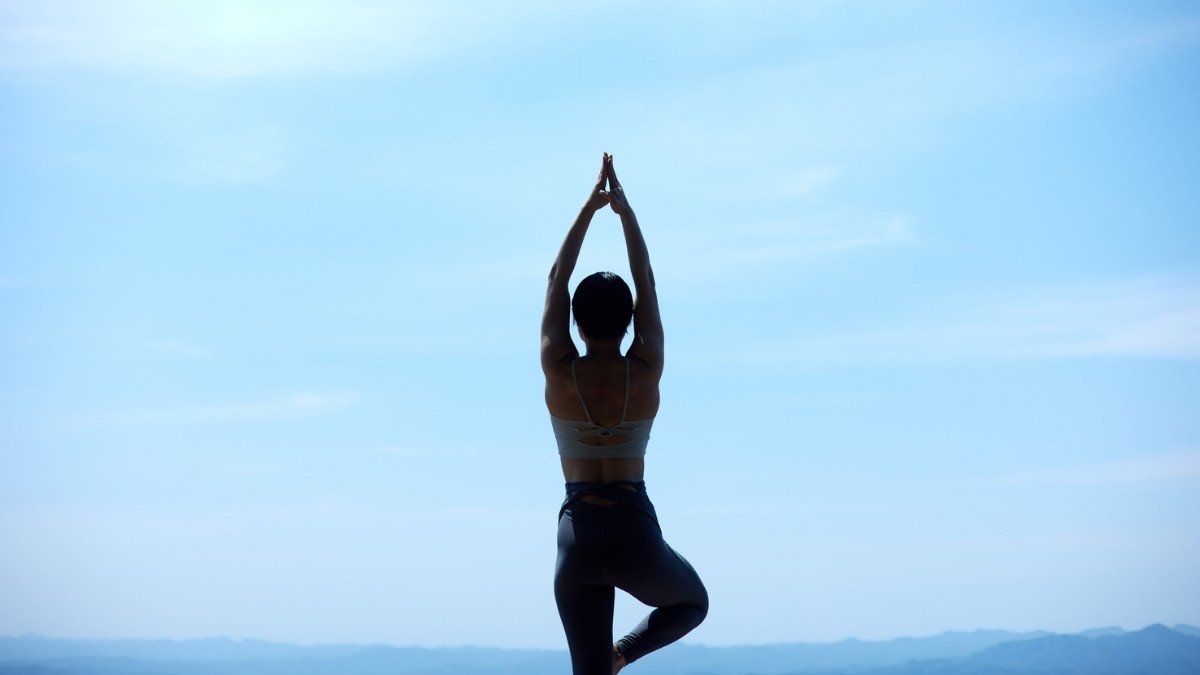
This test, developed by the CDC, is great because it gets progressively harder, giving you a clearer idea of where your specific challenge lies. The goal is to hold each position for 10 seconds. If you can, you move to the next. If not, you stop.
The Stages:
- Side-by-Side: Stand with your feet touching.
- Semi-Tandem: Place the instep of one foot so it’s touching the big toe of the other.
- Tandem: Place one foot directly in front of the other, heel-to-toe, like you’re on a tightrope.
- Single-Leg: Stand on one foot.
What to notice:
- According to the CDC, an older adult who cannot hold the tandem stance (Stage 3) for at least 10 seconds is at an increased risk of falling.
Before You Freak Out… What Your Results Really Mean

Okay. You did the tests. And maybe the numbers weren’t what you were hoping for.
Take a deep breath.
This is the most important part of this whole conversation: A balance test is not a diagnosis. It is not a crystal ball. It is a smoke alarm. It’s a simple, effective tool that signals there might be something worth looking into. It doesn’t tell you the cause or the severity, but it tells you to pay attention.
Honestly, the science shows that these tests have some real limitations. While they’re strongly linked to overall health and mortality, their ability to predict a specific fall can be pretty low. One study found that simply asking someone about their fall history was a better predictor of a future fall than the balance test itself.
And it’s not always about your brain. A poor score could be due to a whole host of other things:
- That tricky ankle you sprained years ago, or arthritis in your hip.
- Side effects from a new medication you’re taking.
- An inner ear issue that has nothing to do with brain aging.
- Damage to the nerves in your feet from something like diabetes.
The power of this test is in its generality. It’s a measure of how well your entire, complex system is working together. A wobble tells you there’s a weak link somewhere in that chain. And that is incredibly valuable information.
And while we’re at it, let’s clear up some of the noise out there about brain health.
- Myth: Dementia is just a normal, inevitable part of getting old.
- Fact: Nope. Dementia is a disease, not a destiny. Experts estimate that up to 40% of dementia cases could be related to modifiable lifestyle factors. You have more agency here than you think.
- Myth: You can prevent dementia with “brain training” games and “superfoods.”
- Fact: If only it were that easy. There is no single magic bullet. Most brain games just make you better at that specific game, with little transfer to real-world skills. And no single food can save your brain. What works is a consistently healthy lifestyle and engaging in genuinely new and challenging activities, like learning an instrument or a language.
The Good Part: How to Build a Steadier Body and a Sharper Mind
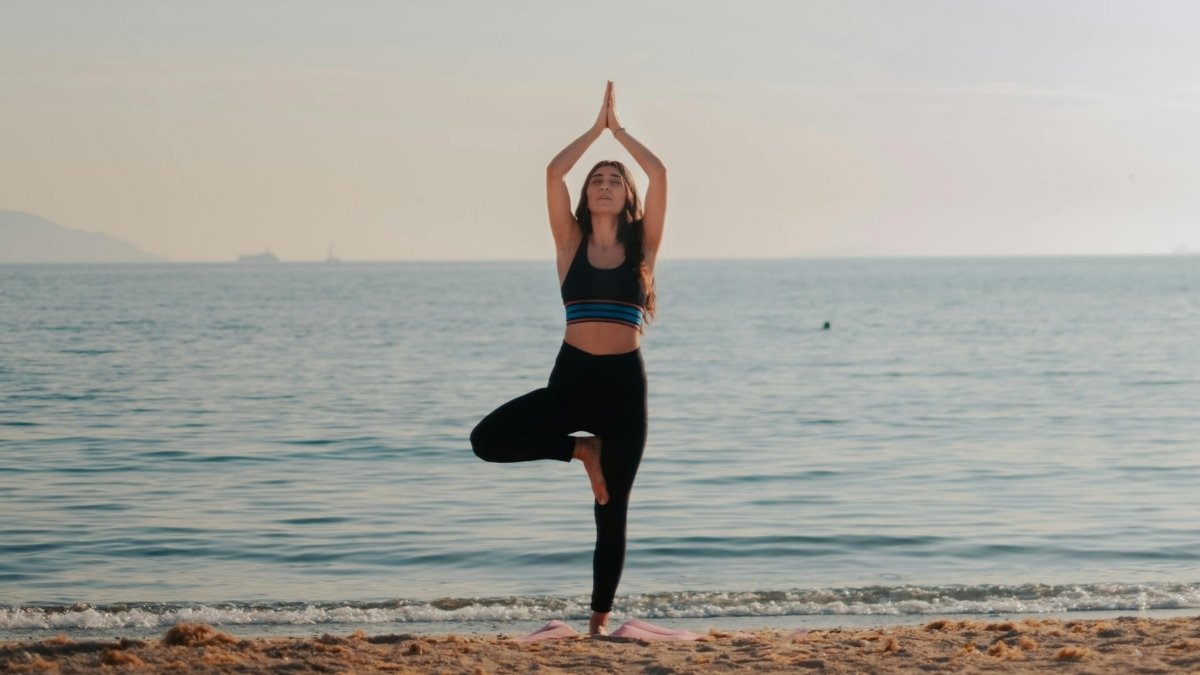
A less-than-perfect score on a balance test isn’t a verdict. It’s an invitation. It’s a call to action. And the best part is, the systems that control your balance are incredibly adaptable. You can train them. You can improve them.
And here’s the beautiful part: the very same things you do to build a steadier body also help build a sharper mind.
Your Physical Therapist’s Toolkit for Better Balance
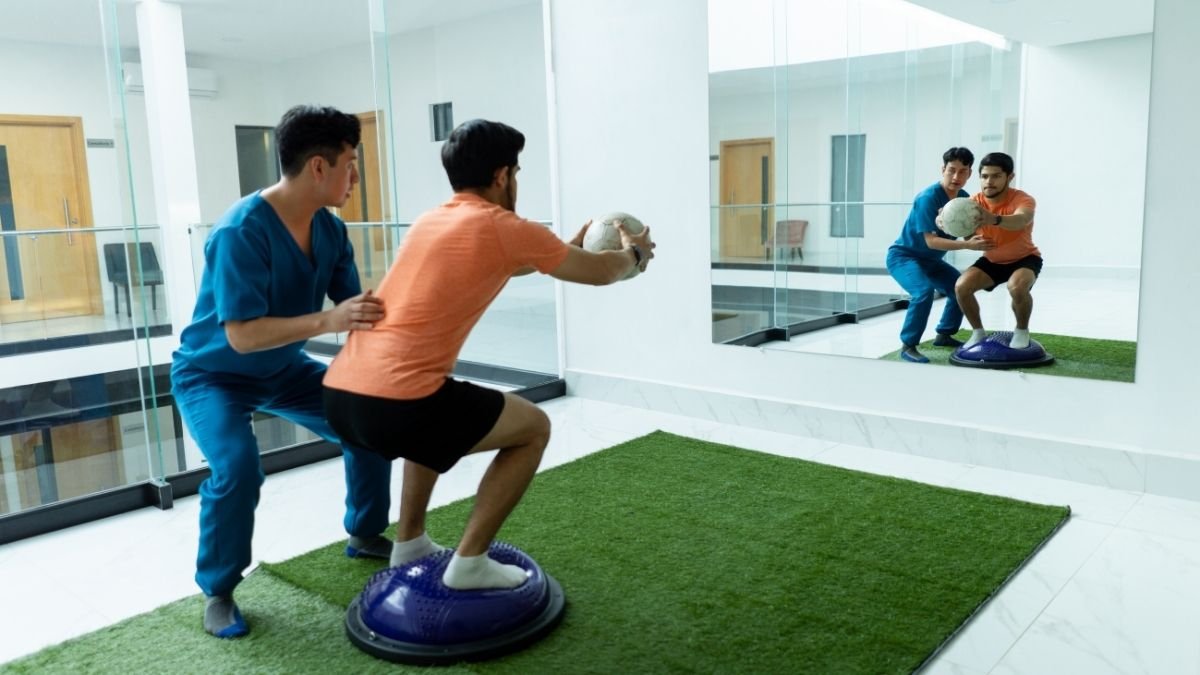
These are the foundational exercises that can make a real difference. Remember to use your trusty support surface!
For Static Balance (Staying Still):
- Single-Leg Stance Practice: The test is also the training! Just practice holding it, aiming to add a few seconds each week. Start with 10 seconds and see if you can work your way up to 30.
- Weight Shifts: Stand with your feet hip-width apart. Slowly shift your weight all the way over to your right foot, letting your left foot hover just above the floor. Hold for 30 seconds, then slowly shift to the other side. This is core balance control.
- Tree Pose: This classic yoga pose is fantastic. Place the sole of one foot on your inner calf or thigh (never on the knee joint). Find a spot on the wall to focus on and hold. It trains your body and your focus at the same time.
For Dynamic Balance (Moving with Control):
- Heel-to-Toe Walk: The old sobriety test is actually a brilliant balance exercise. Walk in a straight line, placing the heel of one foot directly in front of the toes of the other. Use a wall for fingertip support if you need it.
- Leg Raises (Back and Side): Stand behind a chair. Slowly lift one leg straight back, squeezing your glutes. Then do the same, lifting it out to the side. These moves strengthen the hip muscles that are absolutely critical for stability when you walk.
- Sit-to-Stands: Yep, the test is also one of the best exercises. Practice doing it slowly and with perfect control, trying not to use your hands. This builds the real-world strength you need every day.
The Neurologist’s Prescription for a Healthier Brain
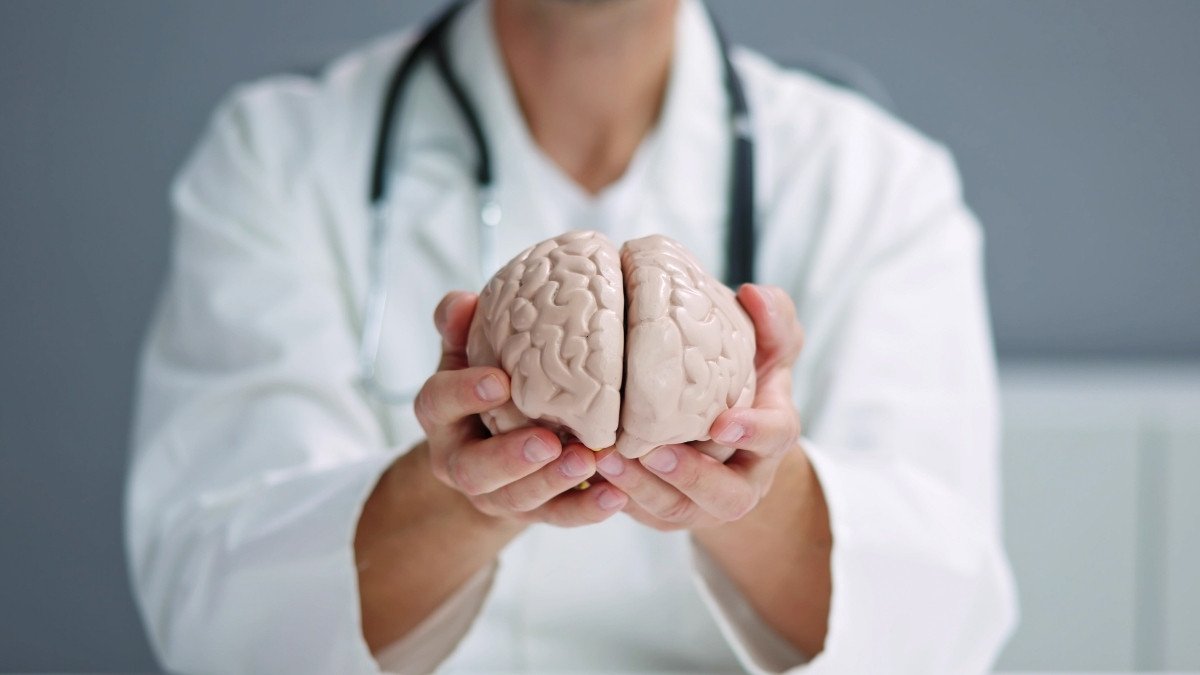
You can’t separate your body from your brain. A holistic approach is the only one that truly works.
- Move Your Body: Regular physical activity is like medicine for your brain. Brisk walking boosts blood flow, delivering oxygen and nutrients. High-Intensity Interval Training (HIIT) has even been shown to temporarily increase a protein called BDNF, which is like fertilizer for your brain cells.38 The goal is at least 150 minutes of moderate activity a week.
- Feed Your Brain: There’s no magic food, but a pattern like the Mediterranean diet—rich in plants, fish, healthy fats, and whole grains—is consistently linked to better brain outcomes. And make sure you’re getting enough key nutrients like B vitamins and magnesium.
- Prioritize Sleep: This is non-negotiable. During deep sleep, your brain runs a cleanup cycle, clearing out metabolic waste that can build up and contribute to problems down the line. Aim for 7-9 hours of quality sleep. It’s one of the most protective things you can do.
- Manage Stress & Stay Connected: Chronic stress is toxic to your brain. Simple practices like deep breathing can calm your nervous system. And connecting with other people is a powerful form of cognitive stimulation. Call a friend. Join a club. It matters.
Need a Little Extra Support? A Few Tools That Can Help
Starting a new routine can feel like a big step, and sometimes having the right tools can make all the difference. Think of these not as requirements, but as helpful companions on your journey to feeling steadier and more confident. They can help you practice safely, add a little challenge when you’re ready, and keep your muscles strong. Here are a few things that many people find useful.
1. ProsourceFit Core Balance Pad:

This simple foam pad is a fantastic starting point. When you stand on it, its unstable surface makes your ankle and leg muscles work harder to keep you steady, which is exactly what you want. It’s perfect for practicing your single-leg stances and adds a new level of challenge to your routine safely.
2. YES4ALL Wooden Wobble Balance Board:

Once you feel comfortable on a foam pad, a wobble board is the next step up. It helps improve your dynamic balance, coordination, and reaction time. Using it for just a few minutes a day can seriously strengthen the small stabilizing muscles in your ankles and core.
3. TheraBand Resistance Bands Set:

Strength is a huge part of balance. This set of resistance bands is perfect for the side and back leg raises we talked about. They come in different resistance levels, so you can start light and gradually increase the challenge as you get stronger. They’re incredibly versatile and safe for home workouts.
4. “FallProof!: A Comprehensive Balance and Mobility Program” Book:
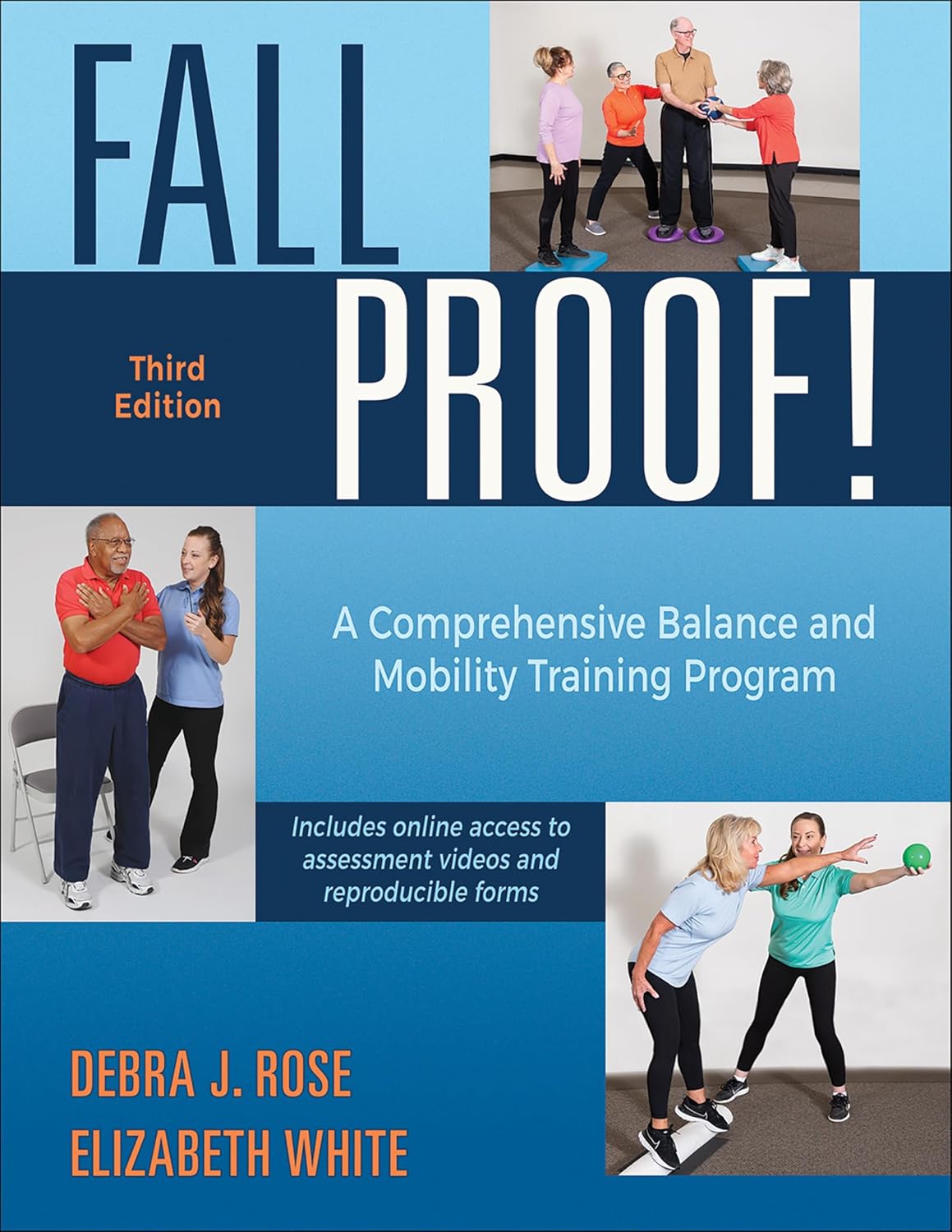
If you’re the kind of person who loves to dive deep, this book is a goldmine. It’s often recommended by physical therapists and provides structured, evidence-based exercise programs to improve balance and prevent falls, explaining the “why” behind each movement.
5. Secure Transfer and Walking Gait Belt:

If you’re feeling particularly unsteady or have a loved one helping you with your exercises, a gait belt is an essential safety tool. It gives your helper a secure place to hold onto, allowing them to support you and prevent a fall without grabbing your arm. It provides peace of mind for both of you.
When to Talk to a Professional
This at-home check-in is a great start, but it’s not a substitute for professional advice. Please make an appointment with your doctor if:
- You notice a sudden change in your balance or feel dizzy.
- You can’t hold a single-leg stance for even 5 seconds.
- You’ve had one or more falls in the past year.
- Your balance issues are happening alongside noticeable memory problems or confusion.
Your primary doctor is the right place to start. They can help figure out what’s going on and may refer you to a physical therapist for a specialized balance program or a neurologist if they suspect a deeper issue.
Your Balance Is a Story, Not Just a Number
In the end, this isn’t about passing or failing a test. It’s not about obsessing over the number of seconds on a stopwatch. It’s about listening.
Your ability to stand tall and steady is a visible, tangible expression of your inner neurological vitality. It’s a story about how well your brain is integrating the world and keeping you safe within it.
That little wobble isn’t a verdict. It’s an invitation—an invitation to pay attention, to take proactive steps, and to embrace the powerful connection between a steady body and a sharp mind. It’s a reminder that the journey to healthy aging is one we don’t just walk, but one we balance upon, every single day.


